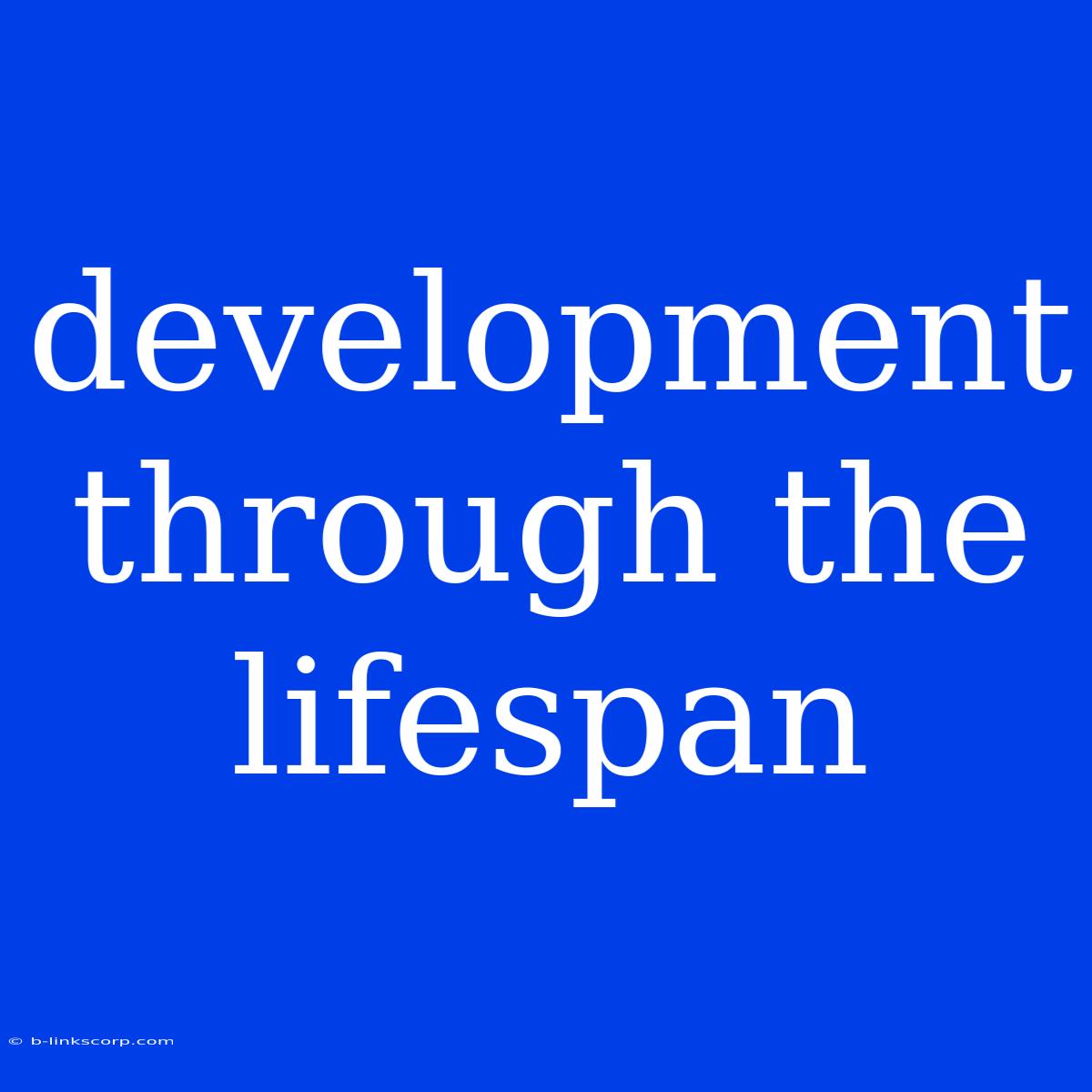Development Through the Lifespan: A Journey of Growth and Change
What is Lifespan Development?
Lifespan development is the scientific study of how humans change and grow throughout their lives. It encompasses physical, cognitive, social, and emotional changes from conception to death. This field explores the intricate interplay of factors influencing our development, including genetics, environment, culture, and personal experiences.
Stages of Lifespan Development:
The lifespan is typically divided into distinct stages, each with its own unique characteristics and challenges:
1. Prenatal Development:
- From conception to birth: This stage encompasses rapid physical growth and the development of vital organs.
- Important milestones: Formation of the nervous system, development of limbs, and the beginning of organ function.
2. Infancy and Toddlerhood (0-3 years):
- Rapid physical growth and development: From crawling to walking, infants and toddlers acquire essential motor skills.
- Language development: From babbling to forming simple sentences.
- Social and emotional development: Attachment to caregivers, developing trust, and exploring their environment.
3. Early Childhood (3-6 years):
- Cognitive growth: Expanding vocabulary, learning through play, and beginning to understand abstract concepts.
- Social development: Interacting with peers, developing social skills, and establishing friendships.
- Emotional development: Identifying and expressing emotions, developing self-regulation skills.
4. Middle Childhood (6-11 years):
- Cognitive development: Developing logical reasoning, problem-solving skills, and a greater understanding of the world.
- Social development: Developing peer relationships, forming friendships, and participating in group activities.
- Emotional development: Developing a sense of self-esteem, managing emotions, and understanding social expectations.
5. Adolescence (11-18 years):
- Puberty and physical changes: Rapid hormonal shifts, growth spurts, and the development of secondary sex characteristics.
- Cognitive development: Abstract thinking, forming opinions, and exploring identity.
- Social development: Navigating peer pressure, forming romantic relationships, and gaining independence.
6. Early Adulthood (18-40 years):
- Identity development: Exploring career paths, forming relationships, and establishing independence.
- Cognitive abilities: Peak performance in many cognitive areas, including memory, reasoning, and problem-solving.
- Social development: Building careers, starting families, and contributing to society.
7. Middle Adulthood (40-65 years):
- Physical changes: Gradual decline in physical abilities, but many remain physically active.
- Cognitive development: Maintaining cognitive abilities but experiencing some decline in certain areas.
- Social development: Focusing on relationships, family, and contributions to society.
8. Late Adulthood (65 years and beyond):
- Physical changes: Further decline in physical abilities, increasing health concerns, and potential disabilities.
- Cognitive development: Potential for cognitive decline, but many maintain good cognitive function.
- Social development: Adjusting to retirement, maintaining social connections, and finding meaning in life.
Factors Influencing Development:
- Nature vs. Nurture: The debate surrounding the influence of genetics and environmental factors on development.
- Culture and Society: The role of cultural norms and societal expectations in shaping individuals.
- Personal Experiences: Life events, relationships, and individual choices contribute to developmental pathways.
Understanding Lifespan Development:
- Provides insight into human behavior: Understanding developmental stages and factors can help us better comprehend individual choices, motivations, and challenges.
- Guides educational practices: It informs educational methods and curriculum design for optimal learning and development at different ages.
- Promotes healthy aging: Knowledge about aging and cognitive changes allows for proactive interventions and healthy lifestyle choices to support well-being in later life.
In Conclusion:
Lifespan development is a continuous process of growth, change, and adaptation. By studying these changes across the lifespan, we gain a deeper understanding of the human experience and how individuals navigate their journeys of growth and transformation.

